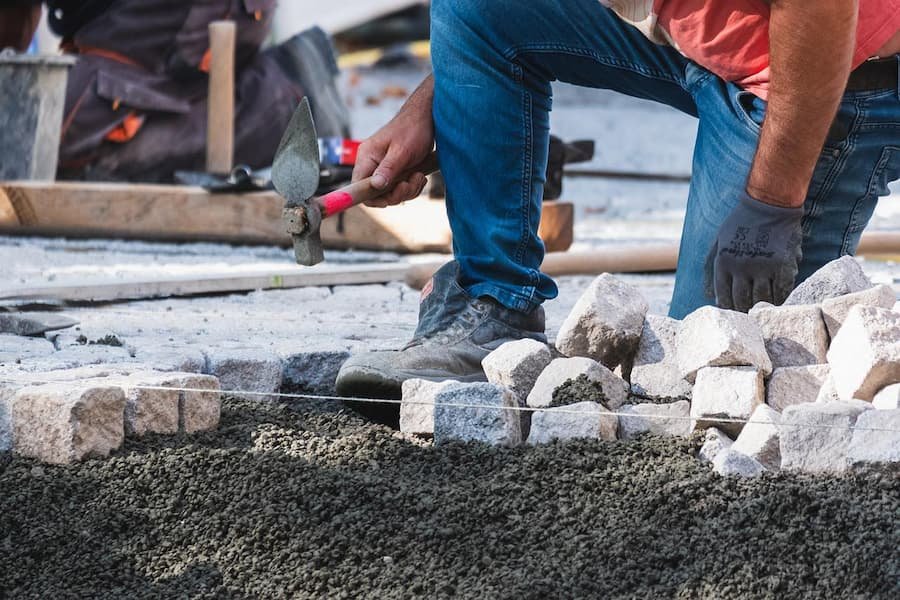Is Paver Edging Necessary?
You may hear people complain about their pavers widening out or making small gaps. This will hurt the pavers in the long run. If you plan to install pavers or already have pavers, you may want to consider adding edging, and most professionals would recommend it too. Do pavers need edging, and how important is it to add them?
Do Pavers Need Edging?
Yes, pavers do need edging. Edging is needed and is an essential part when you need to install pavers. If there’s no edging in your pavers, they will likely compromise the design because it will sink to the stone base or spread later on. You will also have to deal with cracks that can house weeds and moss.
Pavers are generally installed along the whole perimeter on joint sand or bedding sand and a stone base, so they stay durable on the patio and reduce the chances of cracking, shifting, or lifting, especially during harsh winters. You might need to install them differently if the pavers are installed next to another solid surface or concrete curb.
If your pavers don’t have edging, they may not last long, and you may have to redo the whole design. That’s why edging is required if you want to save money and make the pavers last longer.
Why Edging Is Important in Pavers
Most paver hardscape problems are caused by damaged or nonexistent edging. Over time and with harsh winters, the integral structure of your pavers will be affected if your edging is ineffective. As a result, there may be tripping hazards or unwanted weeds growing between the pavers.
Repairing a small damaged section is easy. If the paver gets chipped or shifts over time, don’t let it get too big, or you may end up with more expensive repair and restoration as it spreads to larger areas. However, permeable pavers have been studied lately, which might help prevent such damages.
THINGS YOU CAN DO TO KEEP PAVERS IN PLACE
Know your edging options: You need to be open about your edging options and choose one that is compatible with your patio, especially with its shape.
Consider using snap-edge for edging: they can fit with most shapes like lines, curves, and even full radius.
Use a concrete curb or a concrete paver system of borders if you want to save on cost: you can place these around an angle and even a curve.
Use locking spikes to keep the paver edging in place: the paver edging needs to be in place also to effectively prevent your pavers from moving.
If you can afford it, it’s better to consult with landscaping professionals like us, Aviara Pavers, who knows a lot about paver system installations. We have ICPI-certified designers ensuring we give you high-quality service and up-to-date standards in installation and design.
Related Questions
WHAT DO YOU PUT ON EDGES OF PAVERS?
You put edge restraints on the edges of pavers. Edge restraints prevent unnecessary movement from your pavers and increase their longevity.
DO YOU INSTALL AN EDGE RESTRAINT BEFORE OR AFTER PAVERS?
You install an edge restraint after pavers most of the time. This is because they are flexible, so they can adjust to the design of the pavers.
HOW DO I MAKE SURE PAVERS DON’T MOVE?
You can make sure pavers don’t move by adding edge restraints to your patio. You can either use cement lip, plastic, or a metal edge restraint. These are all great ways to prevent your pavers from shifting around.
Conclusion
Edging is important for pavers if you want them to last longer and retain their quality. It’s best to leave it to professionals like Aviara Pavers to install pavers. If you do it yourself, make sure you follow our advice in paver installations.

